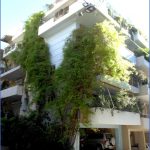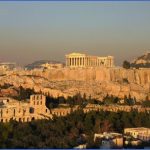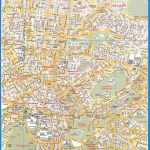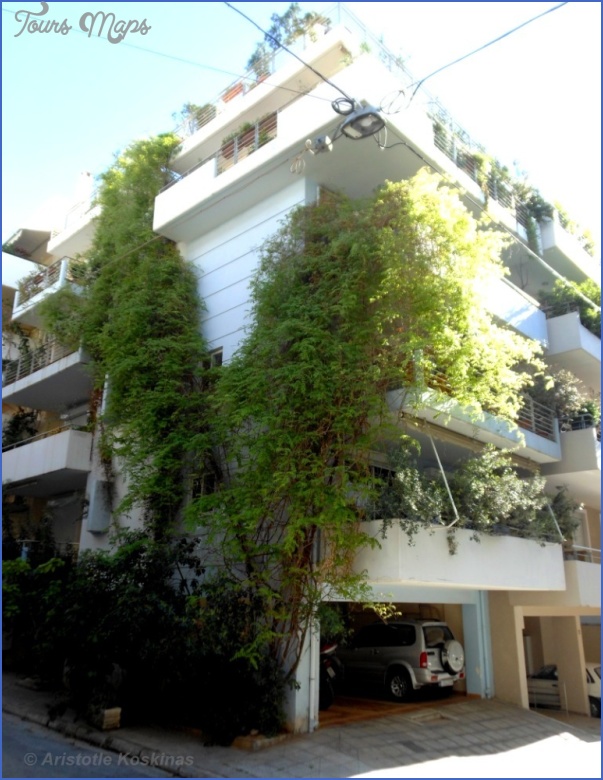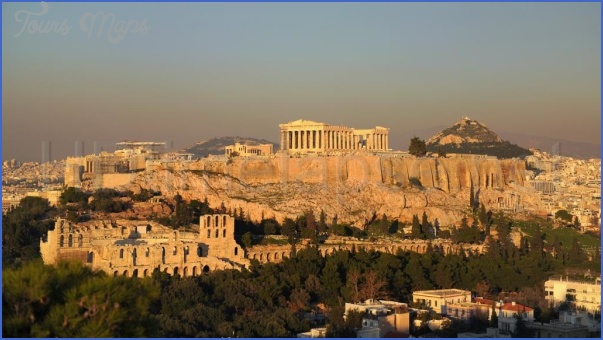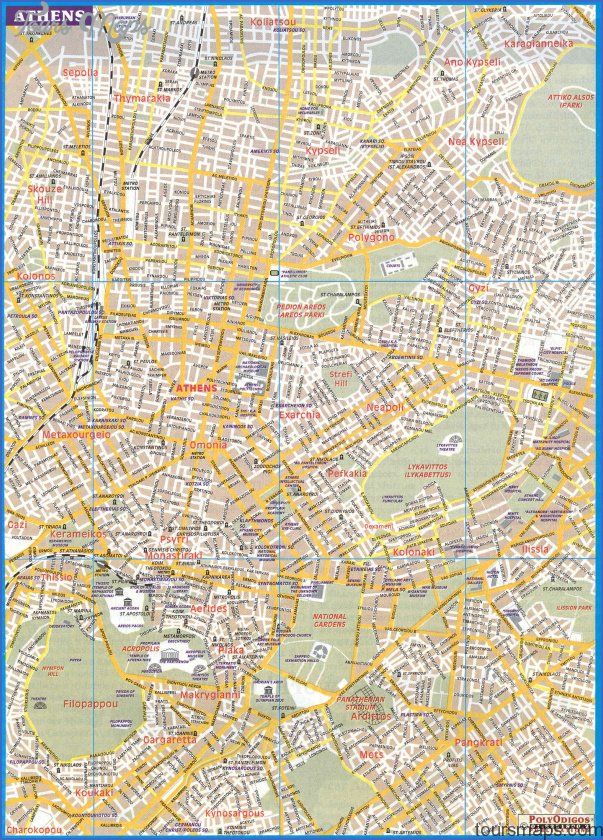Athens Guide for Tourist
AGORA. The Agora served as the city’s marketplace, administrative center, and hub of daily life from the 6th century BC to AD 500. Here, the debates of Athenian democracy raged; Socrates, Aristotle, Demosthenes, Xenophon, and St. Paul all preached here. Today, visitors have free reign over what is now an archaeological site. The 415 BC HHephaesteion, on a hill in the northwest corner of the Agora, is the best-preserved classical temple in Greece, flaunting friezes depicting Hercules’s labors and Theseus’s adventures. The Stoa of Atta-los was a multi-purpose building filled with shops and home to informal gatherings of philosophers. Reconstructed in the 1950s, it now houses the Agora Museum, which contains relics from the site. According to Plato, Socrates’s first trial was held at the recently excavated Royal Stoa, to the left of the Adri-anou exit. (Enter the Agora off PI. Thission, from Adrianou, or as you descend from the Acropolis. Open daily 8am- 7:20pm. ‚4, students and EU seniors ‚2. Under-18 and EU students free.)
KERAMEIKOS. The Kerameikos’s rigidly geometric design is quickly noticeable upon entering the grounds; the site includes a large-scale cemetery and a 40m-wide boulevard that ran through the Agora and the Diplyon Gate and ended at the sanctuary of Akademos, where Plato founded his academy. The
Oberlaender Museum displays finds from the burial sites; it houses an excellent collection of highly detailed pottery and sculpture. (Northwest of the Agora. From Syndagma, walk toward Monastiraki on Ermou for lkm. Open Su and Tu-Sa 8:30am-3pm. ‚2, students and EU seniors ‚1. Under-18 and EU students free.)
TEMPLE OF OLYMPIAN ZEUS AND HADRIAN’S ARCH. Right in the center of downtown Athens, you’ll spot the traces of the largest temple ever built in Greece. The 15 Corinthian columns of the Temple of Olympian Zeus mark where it once stood. Started in the 6th century BC, it was completed 600 years later by Roman emperor Hadrian, who attached his name to the effort by adding an arch to mark the boundary between the ancient city of Theseus and Hadrian’s own new city. (Vas. Olgas at Amalias, across from the National Garden. Open Su and Tu-Sa 8:30am-3pm. Temple ‚2, students and EU seniors ‚1. Under-18 and EU students free. Arch free.)
OLYMPIC STADIUM. The Panathenaic Olympic Stadium is wedged between the National Gardens and Pangrati, carved into a hill. The site of the first modem Olympic Games in 1896, the stadium seats 75,000 and will serve as both the finish line of the Marathon events as well as the venue for the sport of archery during the 2004 Summer Olympics. A new Olympic stadium sits in the northern suburb of Irini; take the Ml Metro line right to it. (On Vas. Konstantinou. From Syndagma, walk up Amalias 15min. to Vas Olgas, then follow it left Alternatively, take trolley #2, 4, or 11 from Syndagma. Open daily 8am-8:30pm. Free.)
AROUND SYNDAGMA. Be sure to catch the changing of the guard in front of the Parliament building. Every hour on the hour, two evzones (guards) wind up like toy soldiers, kick their tasselled heels in unison, and fall backward into symmetrical guardhouses on either side of the Tomb of the Unknown Soldier. Athens’s endangered species greenery and shade are preserved in the National Gardens. Women should avoid strolling here alone.
MT. LYCAVITT0S. Of Athens’s seven hills, Lycavittos is the largest and most central. Ascend at sunset to catch a glimpse of Athens’s densely packed rooftops in waning daylight and watch the city light up for the night. At the top is the Chapel of St. George, a popular spot for weddings. A leisurely stroll around the church provides a view of Athens’s panoramic expanse.
HI NATIONAL ARCHAEOLOGICAL MUSEUM. This astounding collection deserves a spot on even the most packed itinerary. The museum’s highlights include the archaeologist Heinrich Schliemann’s treasure, the Mask of Agamemnon, the death mask of a king who lived at least three centuries earlier than Agamemnon himself. (Patission 44. Take trolley #2, 4, 5, 9, 11, 15, or 18 from the uphill side of Syndagma, or trolley #3 or 13 from the north side of Vas. Sofias. Open Apr.-Oct Su and Tu-Sa 8am-7pm, M 12:30-7pm; Nov.-Mar. 8am-5pm; holidays 8:30am-3pm. ‚6, students and EU seniors ‚3. Nov.-Mar. Su and holidays free.)
NATIONAL GALLERY. The National Gallery (a.k.a. Alexander Soutzos Museum) exhibits the work of Greek artists, with periodic international displays. The permanent collection includes works by El Greco, as well as drawings, photographs, and sculpture gardens. (Vas. Konstantinou 50. Set back from Vas. Sofias, by the Hilton. s210 723 5857. Open M and W-Sa 9am-3pm, Su 10am-2pm. ‚6.50, students and seniors ‚3.)
GOULANDRIS MUSEUM OF NATURAL HISTORY. This museum exhibits an impressive array of taxidermied Greek birds and mammals, as well as an overview of insect, reptile, mollusk, and plant biology. (Levidou 13. Open Su-Th and Sa 9am-2:30pm. ‚3; students and children 5-18 years ‚1.20. Children under 5 free.)
Athens Guide for Tourist Photo Gallery
Maybe You Like Them Too
- Arnold A Town with a Heart
- The Best Cities To Visit in The World
- World’s 10 Best Places To Visit
- Map of New York City – New York City Guide And Statistics
- Map of San Francisco – San Francisco Map Free

